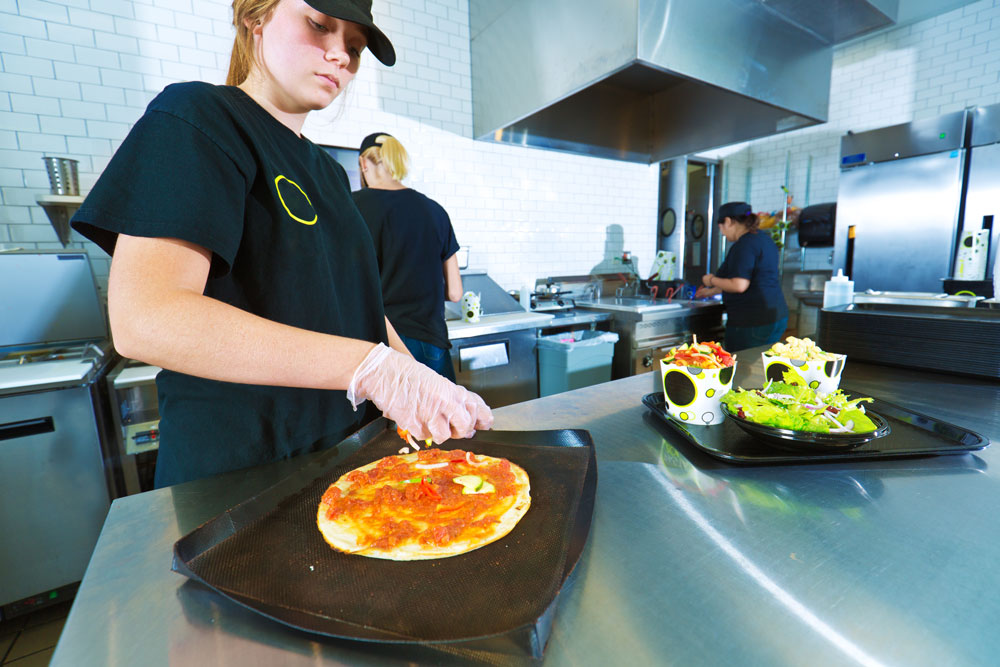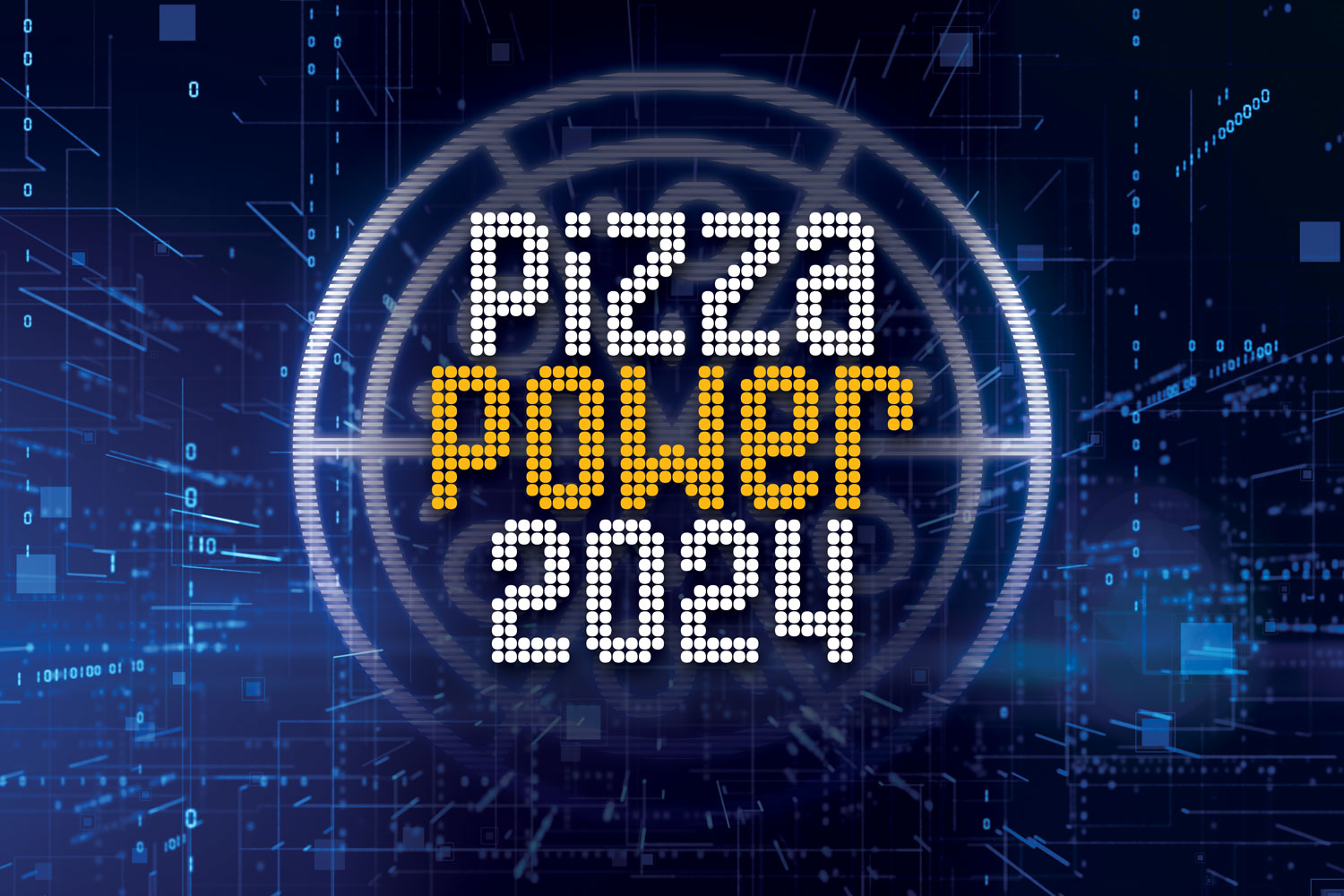By Tracy Morin
Employee pay-on-demand, also known as earned wage access, is growing in popularity as restaurateurs scramble to attract and retain employees in a difficult labor landscape. These kinds of programs allow restaurant workers to get paid some of their wages a lot more quickly than on the usual weekly or two-week pay period—including getting paid at the end of each shift.
But, if you’re new to this service, you probably have some questions. How does it all work, and how can a pizzeria implement it for maximum success? What are its main benefits? And how can you use it as a recruiting tool to attract not only more employees, but more loyal ones? We checked in with experts from both the pizzeria and pay-on-demand industries to find out more.

Getty Images
POV: The Pizzeria Chain
Rohan Shearer, SVP and chief administrative officer for Sbarro, based in Columbus, Ohio, with 670 restaurants worldwide, believes that the greatest selling point for his company’s pay-on-demand system is that it has been extremely easy for employees to use. “Through an app on their phone, an employee can review their daily earnings and then choose to withdraw some or all of those earnings at their convenience, without having to wait until the next pay cycle,” Shearer explains. “There are no pre-approvals required or people they have to contact. Once the app is set up, it ties automatically to Sbarro’s payroll, and how often they view their earned balances or choose to access their funds is completely up to them.”
Sbarro rolled out this option to all company-owned locations in April 2022. Execs at the company had heard from employees that they wanted earlier access to their earnings, and this was an easy, cost-effective way to provide this option for them. “From our view, having on-demand access to wages is now table-stakes,” Shearer says. “After doing extensive research into the many options available, we chose to partner with DailyPay, one of the leading providers of this type of service.”
Shearer adds that the benefits have been excellent for Sbarro as an employer, since there is no cost other than the time it takes for the integration and ongoing maintenance. And the benefits for the employees have been just as impactful—they love that they have more control over accessing their wages, as well as an immediate and anytime look at how much they’ve earned. “While some may think that the earlier withdrawals are for core living expenses like rent or groceries, we’ve seen employees access their wages for limited-time deals on concert tickets or vacations, daily coffee or other more discretionary items, so that they don’t have to use credit cards between paydays,” Shearer says.
“Any operator looking to implement an earned wage access program should complete their due diligence before choosing a program to see what will work for them and their teams.”
— Nadeem Bajwa, Bajco Group (189 Papa Johns stores)
When looking to implement such a system, Shearer believes there are two keys to creating a positive experience. First, ensure that the integration between the provider and the company’s payroll system is complete and tested prior to launch, in order to give employees a good experience from the beginning, without cumbersome tech-related issues. (He notes that not all providers have existing integrations with every payroll provider out there, so that’s something to research on the front end.) Second, ensure that communications with the employees are thorough and that they have a chance to ask questions. “The more effective the communications, the greater the adoption rate, especially when employees realize that they can access their funds as needed, with little or no cost to them,” Shearer says.
Many experts say this type of payment model is more desirable right now—and may reflect a shift in company culture as it becomes the model of what younger employees expect. “The numbers speak for themselves: Since rolling this program out, in the first nine months, 50% of our employees had downloaded the app, and most check their balances regularly,” Shearer reports. “And 50% of those employees are making regular transfers from their pay balance.”
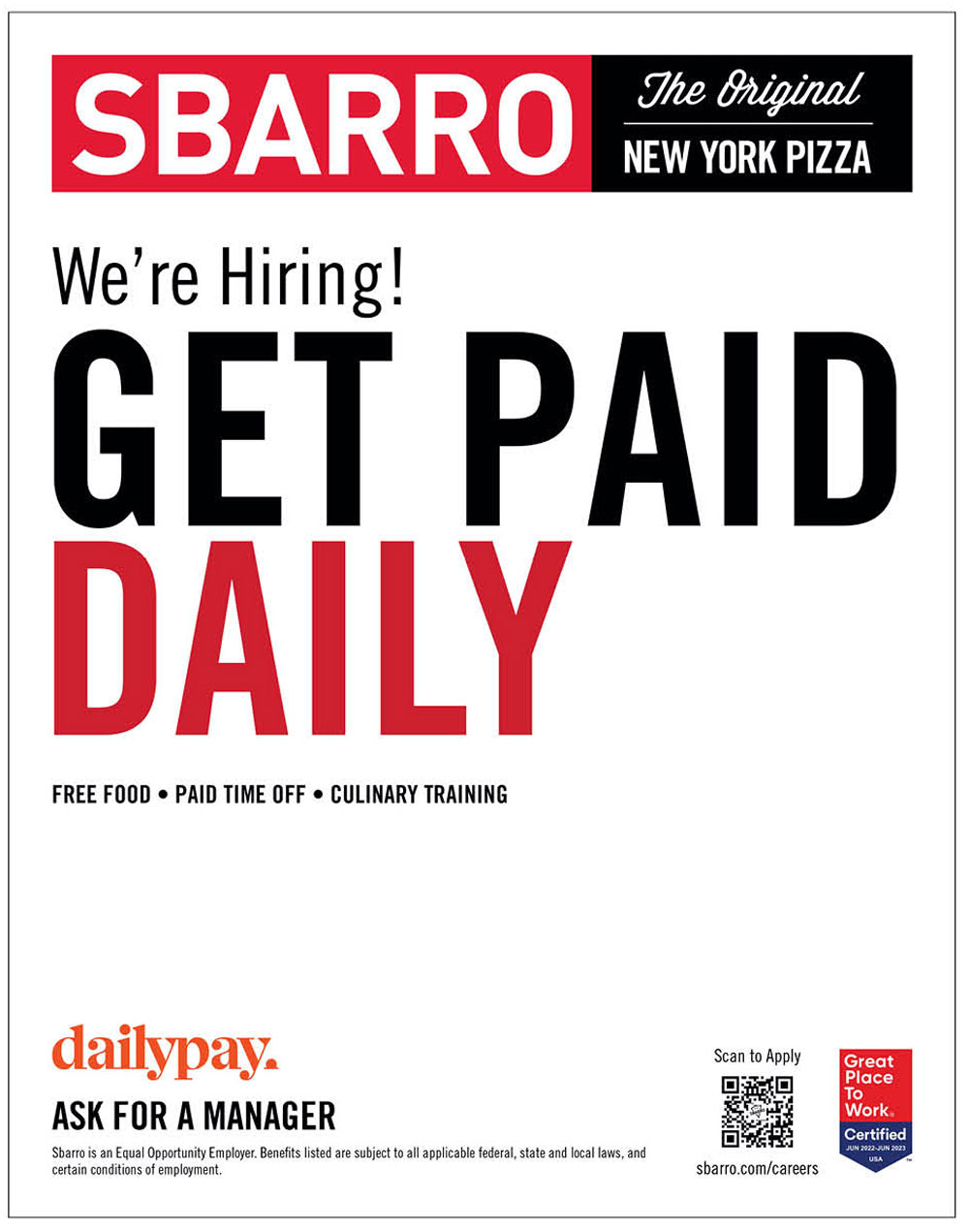
Sbarro advertises its daily pay option to attract employees—and ensures its system is easy to use once they’re hired. Courtesy Sbarro
“In the first nine months, 50% of our employees had downloaded the app, and most check their balances regularly. And 50% are making regular transfers from their pay balance.”
— Rohan Shearer, Sbarro
POV: The Pay-On-Demand Provider
How is it possible that these companies can work inside a no-fee structure so that employers and employees take advantage of these services at no cost? We checked in with one of these providers to find out more.
First, note that there are various ways these companies can work. Tal Clark, CEO and director of the board for Instant Financial, based in Alpharetta, Georgia, explains that his company offers two ways to earn wages faster: loading tips earned (whether through table service or deliveries) to employees who are serving, via a prepaid VISA card; and by providing same-day access to wages at the end of a shift.
Either setup can help attract employees to the business. “We’ve found that potential employees are two times more likely to take a job when they’re offered same-day pay,” Clark notes. “Instant access will be increasingly expected by millennials and Gen-Zs. So it’s a recruiting tool, but it also works to reduce turnover—because employees are more likely to stay in these jobs and show up for them, and they’re even more likely to take on extra shifts.”
This service can also help stores reduce or eliminate the need for having a lot of cash on hand. Plus, Clark notes, with more Americans having difficulty making it from paycheck to paycheck, having access to their pay helps them take care of routine requirements that enable them to work, such as filling up the car with gas or paying for childcare.
“Through an app on their phone, an employee can review their daily earnings and withdraw some or all of those earnings at their convenience, without having to wait until the next pay cycle.”
— Rohan Shearer, Sbarro
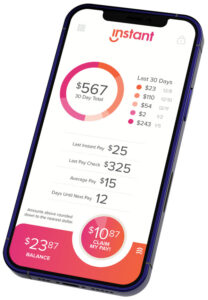 If you’re looking to offer a pay-on-demand option at your pizzeria, Clark advises choosing a program that makes it seamless for the operator—creating no disruption to payroll flow. For example, his company simply needs to know the rate of pay and amount of time worked for the employee, and the service can be integrated with the business’ payroll time and attendance provider, or through a file transfer (whichever is easier for the operator). And employees are not obligated to use the service. “We make 50% of gross wages available to the employee, and they can choose to accept it or not,” Clark explains. “There’s no fee to the employee or employer, because we generate our revenue based on card interchange fees.”
If you’re looking to offer a pay-on-demand option at your pizzeria, Clark advises choosing a program that makes it seamless for the operator—creating no disruption to payroll flow. For example, his company simply needs to know the rate of pay and amount of time worked for the employee, and the service can be integrated with the business’ payroll time and attendance provider, or through a file transfer (whichever is easier for the operator). And employees are not obligated to use the service. “We make 50% of gross wages available to the employee, and they can choose to accept it or not,” Clark explains. “There’s no fee to the employee or employer, because we generate our revenue based on card interchange fees.”
Bajco Group, which owns and manages 189 Papa Johns locations across 10 states in the United States, offers pay-on-demand to its employees, says CEO Nadeem Bajwa. “It provides a platform for Bajco to pay our team members for their earned wages—so, for employers, it helps with the elimination of cash payouts at the store,” Bajwa explains. “It is an exciting program that provides quicker access to earned wages, tips and other compensations.”
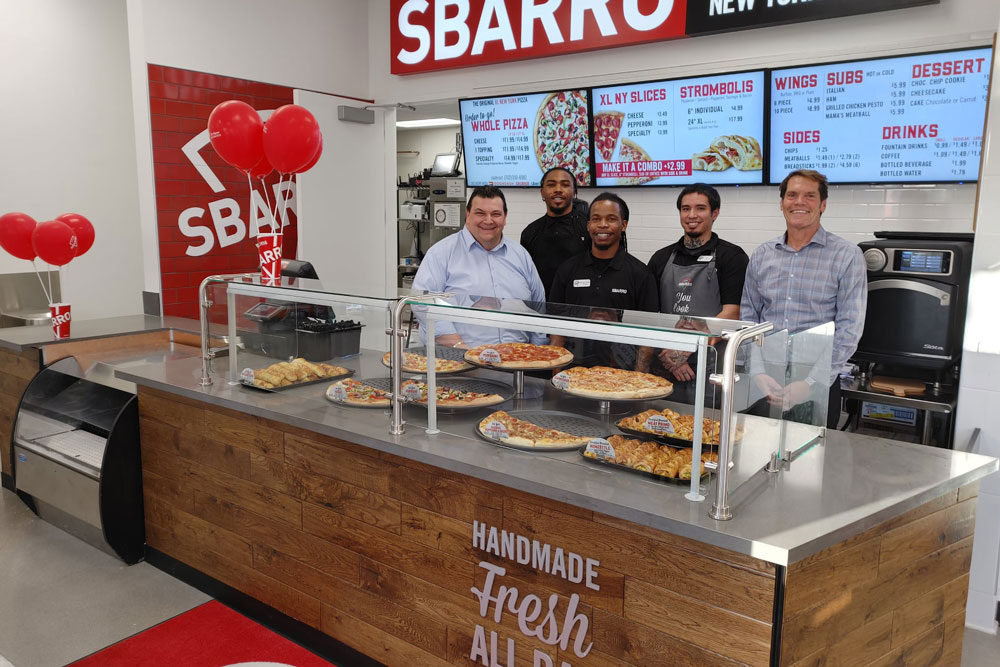
Courtesy Sbarro
For a multilocation operation like his, Bajwa believes the most important step in success has been enabling the communication between the program team and the operator team, and having a clear understanding of the responsibilities on both sides. “Any operator looking to implement an earned wage access program should complete their due diligence before choosing a program to see what will work for them and their teams. But it’s helpful to build a great team, which has been one of the main reasons for Bajco Group’s continued growth.”
Ultimately, Clark believes that this payroll approach is the way of the future. “All operators need to be considering pay-on-demand; if you don’t offer it, you’ll put yourself at a disadvantage,” he opines. “As we move forward, it’s going to become one of those table-stakes benefits. Many people will expect daily access to their wages—and it’s not something that’s happening in the future. It’s here now.”
Tracy Morin is PMQ’s senior copy editor and the editor of PizzaVegan.com.

